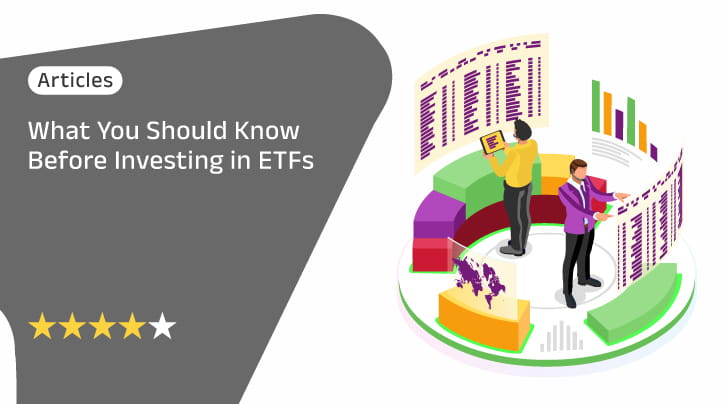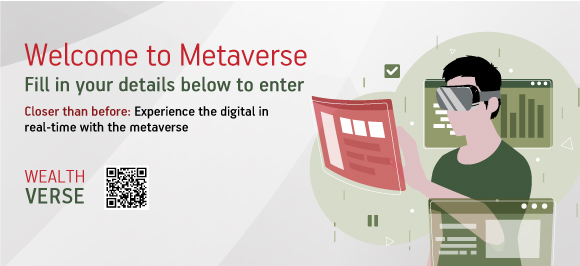-
Our Products
Our FundsFocus Funds
-
Self Care
Self-ServiceFind InformationWays To TransactPartner Solutions
-
Downloads
- Learnings
- About Us
-
More
-
Shareholders
-
Shareholders
-
Updates
-
-
SIP Calculators
- Back
-
Shareholders
What You Should Know Before Investing in ETFs

Jul 22, 2024
5 min
4 Rating
You may have heard about ETFs or Exchange-traded funds. There is a wide range of options, from commodity ETFs (gold, silver) to index ETFs (Nifty 50 Index) to international ETFs (the S&P 500 index). Many understand ETFs as mutual funds you can buy and sell on the stock exchange using your demat account. ETFs were created to bridge the gap between mutual funds and stocks. However, there is more to ETFs that you should know before investing in them.
Things you should know before investing in ETFs
Since ETFs fill the gap between stocks and mutual funds, you should have a good understanding of both. The ETFs give you the liberty to plan your investments and add diversity to your portfolio in terms of security type. However, doing your homework before buying an ETF can go a long way in using ETFs efficiently.
1. Understanding the underlying asset
ETFs will only replicate the performance of the underlying asset. You have to build an understanding of that asset. Understand the risks and returns, volatility, investment horizon, whether the asset aligns with your financial goals, and the portion of your portfolio you want to allocate to that asset. This do-it-yourself (DIY) investing approach works well when you are confident about the investment and need a convenient alternative to get exposure to that asset class.
2. Understanding bid/ask prices
In the stock exchange, the buyer puts a bid price (the maximum price he is willing to pay to buy a stock or ETF). Conversely, the seller puts his stocks for sale at the ask price (the minimum price he is willing to sell a stock or ETF for). The gap between the bid/ask price speaks a lot about the demand for the ETF in the market. Your online trading screen will display the bid/ask price with order quantities to help you gauge the liquidity of the ETF.
If there is a huge gap between the bid and ask price, it shows lower liquidity in the ETF. If the gap is narrow, it means there is high liquidity. High liquidity means there is enough trading activity (an ample number of people are buying and selling ETFs), and you can buy and sell ETF units swiftly without affecting the price.3. Mutual funds have NAVs, ETFs have iNAV
While the ETFs take bid/ask price from stocks, they take NAV from mutual funds. In mutual funds, the asset management company calculates the net asset value (NAV) of the underlying assets at the end of the day. You buy and sell mutual fund units at NAV.
NAV = market value of the securities held by the scheme – liabilities/number of fund units.
The ETFs calculate Indicative Net Asset Value (iNAV) using the above formula. It is called indicative, as you can buy and sell ETFs at a price different from iNAV. You can match the asking price of the ETF with its iNAV before buying it to ensure you are buying at a fair price. You can monitor the iNAV to understand the performance of the ETF.4. Costs you should consider when buying ETFs
Since ETFs are passively managed, their total expense ratio is lower than other mutual fund schemes. But it has additional costs like trading costs and maintenance fees of the demat account. If you don’t already have a demat account, consider the cost of opening and operating a demat account and the customer service offered by brokers.
5. Understanding the tax structure of ETFs
After understanding all investment-related technicalities, you should also know how ETFs are taxed. For tax purposes, ETFs are divided into equity and non-equity ETFs (debt, commodity, and international ETFs).
Equity ETFs are taxed as equity.
-
For any gains realized before one year, you are taxed on short-term capital gains = a flat 15% tax + (cess and surcharge) on the net capital gain.
-
For any gains realized after one year, you are taxed on long-term capital gains. The first Rs 1 lakh gain is exempt and any amount beyond that is taxed at flat 10% tax + (cess and surcharge).
Non-equity ETFs are taxed differently. Both long-term and short-term capital gains are added to the investor’s taxable income and taxed as per the investor’s tax rate. If you fall under the 30% tax bracket, your gains would be taxed at that rate.
The role of ETFs in your portfolio
Once you understand how ETFs work, you can begin DIY investing with ETFs and build your portfolio. In this process, you first understand the different asset classes and allocate a percentage to each asset depending on your financial goals.
If you are new to investing or a new asset class, you can start with small investments in ETFs. Suppose you are building an understanding of gold as an investment; you can consider small investments in gold ETFs. When you have skin in the game, you can learn about the asset class better.
You may allocate 60:20:20 or 40:30:20:10 or any permutation to equity, debt, commodity, and international, as per your financial goals and risk appetite. Once your asset allocation is in place, you can get exposure to them through various instruments including stocks, mutual funds, and ETFs and diversify your portfolio. A timely review of your portfolio will help you understand if that asset allocation is working for you. You can tweak the asset allocation, rebalance the portfolio and reap the benefits of growth in all asset classes.
Aditya Birla Sun Life Mutual Fund offers a range of ETFs to help you up your investing game.
Aditya Birla Sun Life AMC is not indicating or guaranteeing any return.
The information herein is meant only for general reading purposes and the views being expressed only constitute opinions and therefore cannot be considered as guidelines, recommendations or as a professional guide for the readers. The document has been prepared on the basis of publicly available information, internally developed data and other sources believed to be reliable.
Reference Links:
https://www.livemint.com/money/personal-finance/what-should-you-know-before-investing-in-etfs-here-are-essential-facts-and-factors-151691070349636.html
https://economictimes.indiatimes.com/industry/banking/finance/banking/what-should-you-know-before-investing-in-etfs/articleshow/96932798.cms?from=mdr
Mutual Fund investments are subject to market risks, read all scheme related documents carefully.





 1800-270-7000
1800-270-7000



